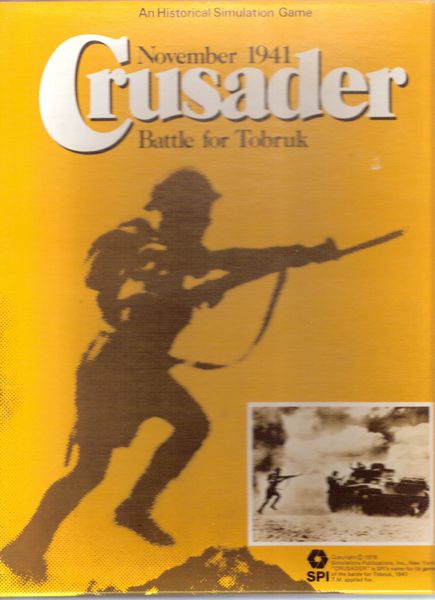Crusader: Battle for Tobruk, November 1941 (1976) Board Game
Crusader: Battle for Tobruk, November 1941 is a wargame set during World War II, specifically focusing on the North African Campaign. The game simulates the battle for Tobruk in November 1941 between the Axis forces led by Erwin Rommel and the Allied forces. Designed by Redmond A. Simonsen and published in 1976 by SPI (Simulations Publications, Inc.), Crusader provides a strategic and historical gaming experience for 2 players.
Game Components of Crusader: Battle for Tobruk, November 1941
How To Setup Crusader: Battle for Tobruk, November 1941
The game setup involves placing the terrain map and deploying the counters according to the scenario being played. The game includes two scenarios, “Sidi Rezegh” and “The Dash to the Wire”, which can be linked together for a campaign game. Players need to follow the specific setup instructions for each scenario, ensuring that units are placed correctly and that the map reflects the historical terrain and conditions of the battle.
Gameplay Mechanics and Game Objective
Player Experience
**Crusader: Battle for Tobruk, November 1941** is designed for two players and is characterized by its simplicity and fluid gameplay. The game emphasizes mobile warfare, with mechanized units providing opportunities for maneuvering. Players must manage their units carefully, ensuring they do not stack and must attack if they enter an enemy’s zone of control. The game typically lasts between 1-2 hours, making it a concise and engaging experience.
Pros
Cons
Personal Thoughts on Crusader: Battle for Tobruk, November 1941
This game is ideal for those interested in World War II history, particularly the North African campaign, and for wargamers looking for a straightforward yet engaging experience. It is a great introduction to hex-and-counter wargames and offers a unique perspective on the mobile warfare characteristic of the desert battles. For experienced wargamers, it provides a quick and thrilling game that can be completed in a short session.
We are supported by our audience. When you purchase through links on our site, we may earn an affiliate commission, at no extra cost for you. Learn more.

